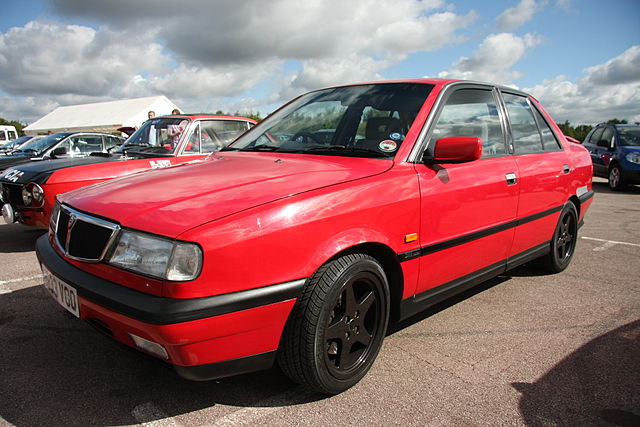
Lancia Dedra - conservatism above all
Content
Lancia has produced a number of fancy cars since the Fiat days, such as Stratos and Delta Integrale, but since being taken over by the Turin giant, it has produced a large number of ordinary cars: Prisma or Thema did not cause a blush on the face. Conventional Delta with less than 80 hp engine was also not as exciting as the high performance versions of the HF Turbo or HF Integrale. One such conventional machine was Dedra.
Lancia Dedra - plebeian roots
In the late 155s, as today, Fiat used one floor platform to build several cars of different brands. The Lancia Dedra was built on the Fiat Tempra and Alfa Romeo 1989 platform, which was created by extending the Fiat Tipo chassis, a design that was voted European Car of the Year.
Looking at the silhouette of Dedra today, one can come to the conclusion that the designers left all the extravagant ideas in their heads, and only the most conservative stylistic decisions were poured onto paper. The car is painfully toned, a little angular, but, despite the routine, it looks much more worthy than the Fiat Tempra.
Italian design, but not extravagant
The Lancia Dedra was designed by the Turin design office I.De.A Institute, responsible for the Tipo, Tempra and Alfa Romeo 155 models. Years later, it is a pity that no decision was made to commission the Centro Stile Lancia team that gave birth to the successor to the Dedra. silhouette. The I.De.A Institute project is not particularly impressive, but at the time of the premiere it looked neat and elegant.
The calm lines of the body may indicate that the Dedra is not aerodynamic. But nothing could be worse - the drag coefficient is 0,29 - the result is at least very good. Lancia used it in their advertising campaign, claiming that the Dedra was more streamlined than rival Audi.
Naturally Aspirated Engines – Designed for Steady Kilometers
Lancia Dedra debuted in 1989 and was initially available with petrol engines 1.6 (89 hp, 78 hp with catalytic converter), 2.0 (112 hp); later an intermediate version was added: 1.8 (109 hp). Diesel lovers had no choice but to choose the 1.9 TD option, which develops 90 hp.
The first Dedra, although not very strong, guaranteed good dynamics and comfort at the same time - the standard package included an audio system with four speakers, power windows or a sunroof. Version 2.0 was equipped with an electronic suspension stiffness adjustment system: depending on the needs, you could choose a comfortable or sporty option.
Lancia Dedra with a turbocharger - a tasty morsel
Since 1991, sports driving enthusiasts have been able to buy a petrol Dedra fitted with a Garrett T3 turbocharger. The front axle model (Dedra 2000 Turbo) produced 162 hp, while the top-end Dedra Integrale (with 4x4 drive) could generate about 180 hp, which translated into the ability to reach 215 km / h and accelerate to 100 km / h took 7,8 seconds. The most common supercharged models, reaching a power of 162 - 169 hp. It is worth mentioning that the 4x4 models had a Viscodrive system, i.e. viscous coupling, which limited wheel slip during movement.
Turbocharged models were dropped from the offer in 1994. Until 1997, two-liter atmospheric units with a capacity of 139 hp were installed, and at the end of production (1999), the most powerful Dedra had a 1.8 16v unit with a capacity of 131 hp. Its characteristic feature was the variable valve timing system. This engine later also powered the Lybra. When buying Dedra with this unit, you need to remember about possible problems with the variator.
The first years of Lancia Dedra was available only as a sedan.
The station wagon appeared only in 1994 and remained niche until the end of production. When designing the Station Wagon version, the stylists did not follow the Tempra, which was even more angular than the sedan as a station wagon. The Dedra SW line is much more streamlined, keeping the style of the car intact, but the luggage compartment is no surprise either.
When the last Dedra left showrooms, the number of units sold was just over 418 10 units. Not a bad result for 1993 years of production of an Italian premium car. In 250, the Italian newspaper Corriere Della Sera, in an article informing about the release of copies, reported that Germany, which was the largest importer of this model, especially liked the Dedra. Few Italian cars of this class successfully compete with the large brands of our Western neighbors.
Photo. Lyancha
